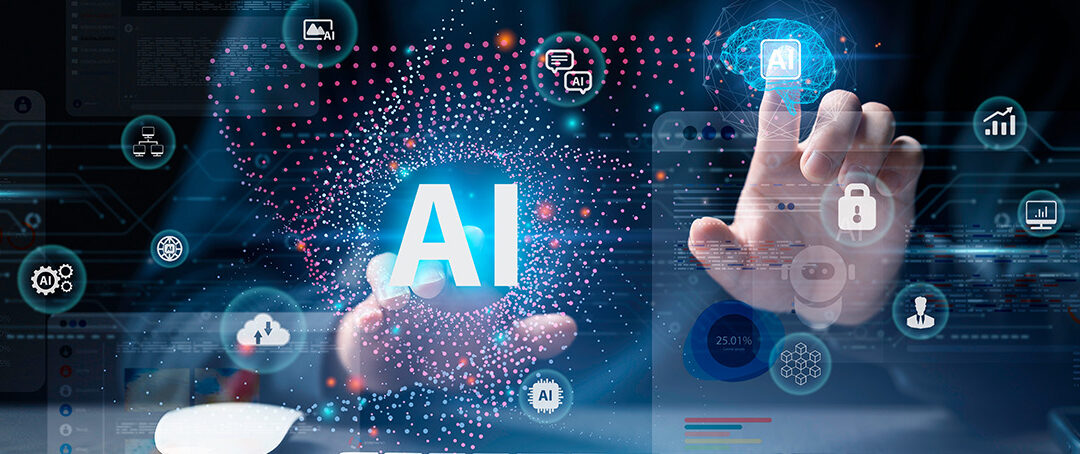Mainframe environments remain critical infrastructure for many organizations, processing millions of sensitive transactions daily while facing increasingly sophisticated security threats. These systems require constant monitoring and protection, yet traditional manual approaches to compliance and risk management strain resources and leave gaps in security coverage. Artificial intelligence brings practical solutions to these challenges through automated threat detection, continuous compliance monitoring, and advanced risk analysis capabilities.
Using AI systems in mainframe security produces powerful benefits for organizations: automated systems catch potential threats that might slip past human observers, risk assessment becomes more accurate through pattern recognition, and compliance processes run with greater efficiency. AI-powered tools adapt to new security challenges while maintaining the stability and reliability that make mainframe systems invaluable to modern business operations.
AI’s Role in Enhancing Mainframe Security
Mainframe environments can be protected by AI through sophisticated monitoring and rapid response capabilities. These technologies scan millions of log entries per second to identify anomalies and flag suspicious patterns, tasks that would take security teams weeks to complete manually. The combination of machine learning algorithms and traditional security measures creates a more complete defense against emerging threats. Security teams can focus on strategic planning and critical decision-making as AI handles routine monitoring tasks.
Advanced Threat Detection Systems
AI-powered security tools analyze system behavior to identify potential threats before they cause damage. Machine learning algorithms pick up subtle patterns in data flows and system access attempts, flagging unusual activities that might signal security risks. Network traffic monitoring is crucial here, providing a vital defense layer by filtering suspicious data patterns and controlling access points. The AI system helps complement your monitoring by spotting potential breaches and automatically comparing current activity against known security baselines. AI also offers real-time alerts about unusual network behavior to assist teams further.
Automated Compliance Management
AI streamlines compliance processes by monitoring system activities around the clock. The technology tracks regulatory requirements and automatically checks system configurations against established standards. Security teams receive instant alerts about compliance gaps backed by detailed reports pinpointing exact system locations and suggested fixes. With more targeted information, teams are better equipped to solve problems quickly and develop better preventive measures based on historical patterns.
The Future of AI in Risk Management
Organizations boost their risk management capabilities when AI tools automatically analyze data and monitor systems. The technology processes vast amounts of system data to spot potential issues before they affect operations. Security teams gain time for strategic planning as AI handles system checks, compliance reports, and access monitoring that once filled their daily schedules. Perhaps most importantly, real-time analysis capabilities mean organizations can shift from reactive problem-solving to proactive risk prevention.
Predictive Analytics and Decision Support
AI systems analyze patterns across multiple data sources to identify potential risks early. The technology examines system performance metrics, security logs, and user behavior to spot trends that might indicate future problems. Organizations can use these insights to prioritize system improvements and allocate resources where they matter most. On the planning side, AI models are also adept at calculating risk probabilities and suggesting mitigation strategies based on successes and failures.
Streamlined Audit Processes
Many time-consuming aspects of audit preparation and execution can be automated by AI. The system continuously collects and organizes compliance evidence, making it readily available when auditors need it. Built-in validation checks ensure data accuracy and completeness, and automated reporting tools generate audit-ready documentation. Thanks to AI systems, regulatory information skyrockets in quality with a fraction of the work previously needed to get the job done.
Overcoming Challenges in AI for Mainframe Environments
Adding AI capabilities to legacy systems presents technical and organizational hurdles that require careful planning. For example, teams are weighing choices like predictive fraud detection against the CPU power and memory needed to run it alongside critical payment processing tasks. Many companies succeed through step-by-step implementation methods that protect existing operations while adding new capabilities.
Technical Hurdles
Mainframe architectures often use specialized protocols and data formats that modern AI systems weren’t built to handle. For instance, processing power limitations can restrict the types of analysis possible without hardware upgrades. System administrators will need new tools and methods to bridge this widening gap between traditional mainframe operations and emerging AI requirements. Testing AI on limited, targeted business tasks helps teams spot and fix integration issues before wider rollout.
Strategic Planning
Budget planning for AI integration requires detailed cost analysis covering hardware updates, software licenses, and staff training. To keep up with the constant evolution of AI, organizations need skilled personnel who understand both mainframe operations and AI systems. A phased rollout helps teams identify and fix integration issues early while maintaining system stability. Regular testing and validation ensure AI tools work correctly within existing security and compliance frameworks.
Final Thoughts
Companies that carefully plan their AI adoption see measurable improvements in threat detection, risk assessment, and audit efficiency. While integration requires careful planning and resource allocation, the benefits of automated monitoring and predictive analysis outweigh initial setup costs. A step-by-step rollout of AI tools, guided by real performance data, helps companies build stronger defenses for their essential mainframe systems.









0 Comments